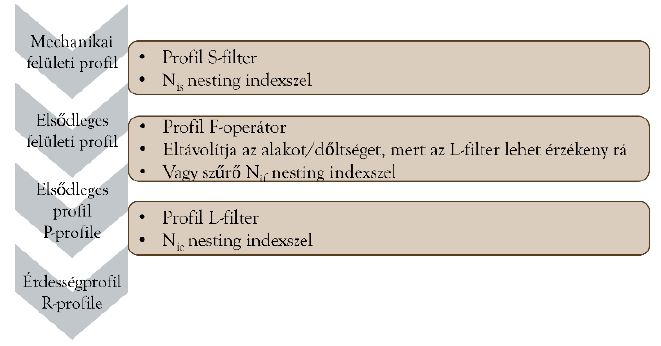Study and comparison of surface roughness parameters in turning
Keywords:
surface roughness, data processing, filtration, ISO 21920 standardAbstract
As a result of the 2021 standard change affecting surface roughness measurement, we developed a software to calculate the parameters characterizing surface roughness according to the latest, ISO 21920:2021 standard, as the university currently does not have evaluation software or measuring device capable of this. The purpose of this article is to present the new data processing procedure in detail, and to validate the correctness of the procedure with measurements performed on turned artefacts with a Mitutoyo SJ 301 roughness measuring instrument. This was done by comparing the calculated values with the ones shown by the device. As a result, we obtained minor differences, which can be explained by the difference in numerical methods as well as the new procedure.
References
ISO 21920 (2022) GPS. Surface texture: Profile, ISO, Geneva.
Bhushan, B. (2000). Surface roughness analysis and measurement techniques. In B. Bhushan, Modern tribology handbook, two volume set (old.: 79-150). Boca Raton, Florida: CRC Press.
Yang, C., Tartaglino, U., & Persson, B. N. J. (2006). Influence of surface roughness on superhydrophobicity. Physical review letters, 97(11), 116103.
ISO 4287 (1997) GPS — Surface texture: Profile method — Terms, definitions and surface texture parameters, ISO, Geneva.
ISO 4288 (1996) GPS — Surface Texture: Profile Method — Rules and Procedures for the Assessment of Surface Texture, ISO, Geneva.
Lou, S. e. (2019). An investigation of the mechanical filtering effect of tactile CMM in the measurement of additively manufactured parts. Measurement, 144, 173-182.
Muralikrishnan, B. R. (2009). Computational Surface and Roundness Metrology London: Springer-Verlag London Limited.

Downloads
Published
Versions
- 2024-11-13 (2)
- 2024-11-12 (1)
Issue
Section
License
Copyright (c) 2024 Bánki Közlemények (Bánki Reports)

This work is licensed under a Creative Commons Attribution-NonCommercial-NoDerivatives 4.0 International License.
Bánki Közlemények is loyal to open access for academic work. All the original articles and review papers published in this journal are free to access immediately from the date of publication. We don’t charge any fees for any reader to download articles and reviews for their own scholarly use.
The Bánki Közlemények also operates under the Creative Commons Licence CC-BY-NC-ND. This allows for the reproduction of articles, free of charge, for non-commercial use only and with the appropriate citation information. All authors publishing with the Bánki Közlemények accept these as the terms of publication.

